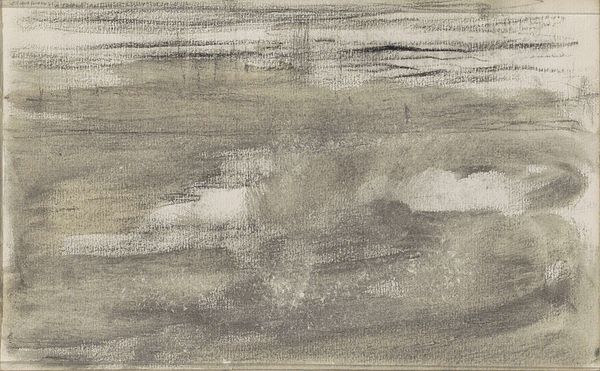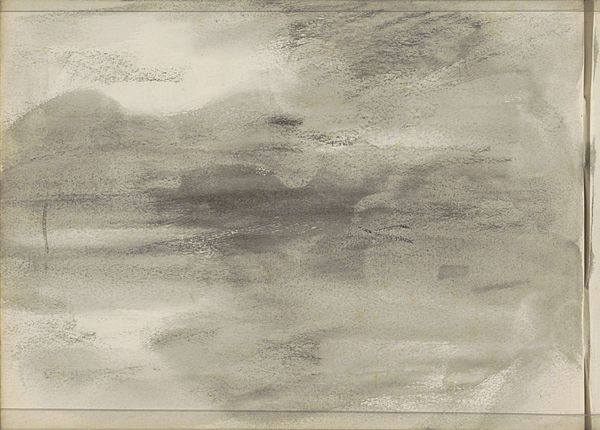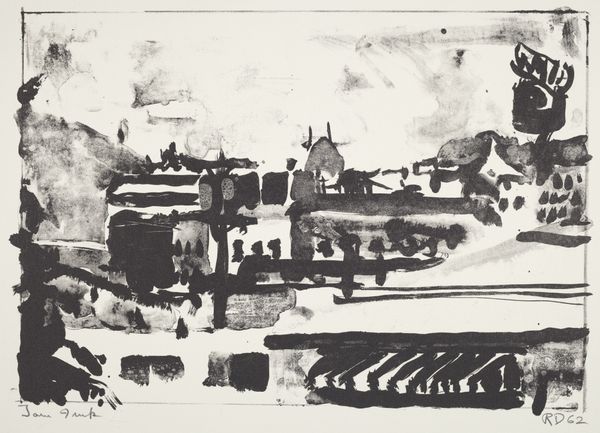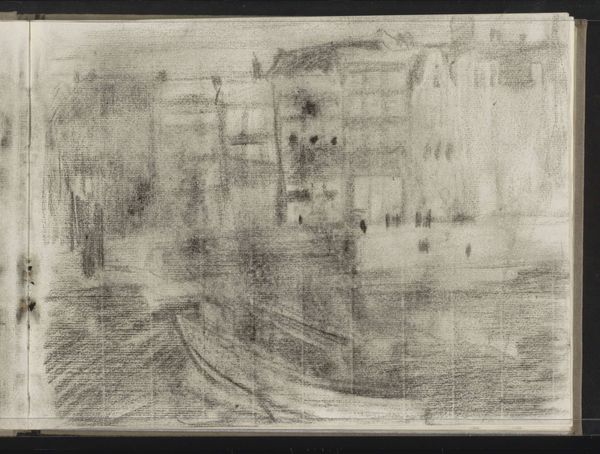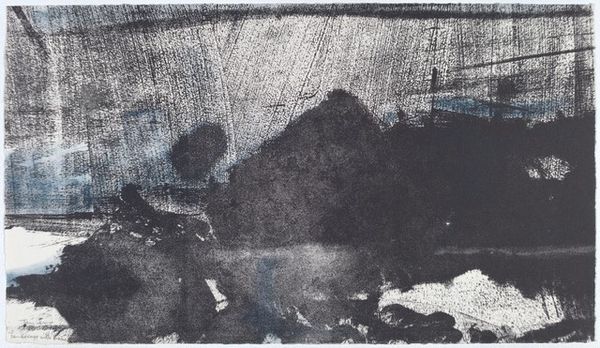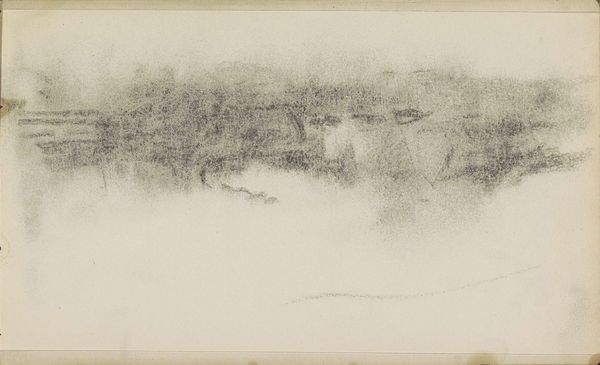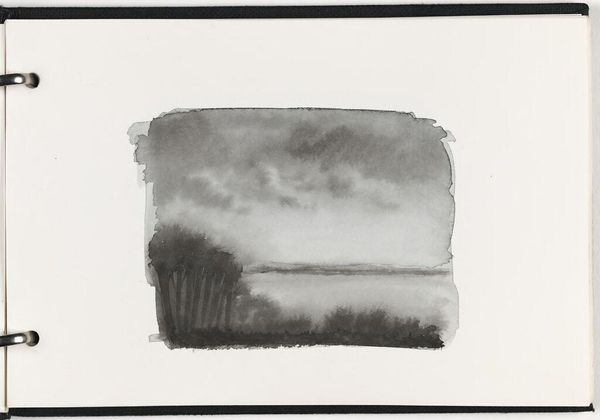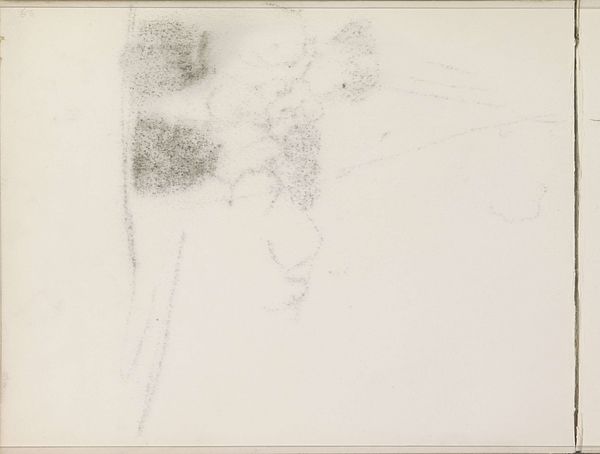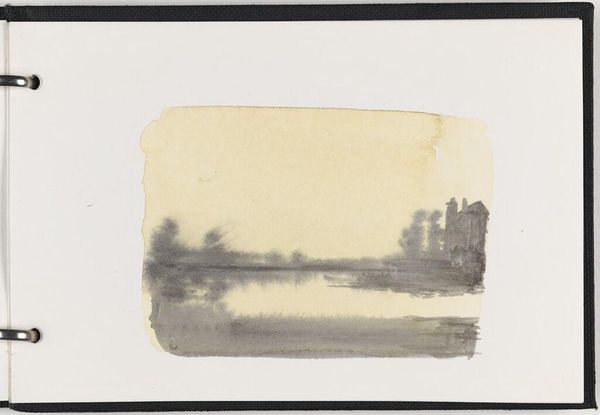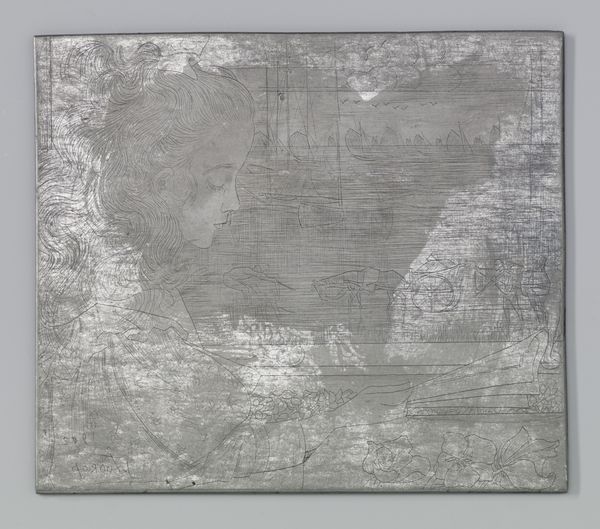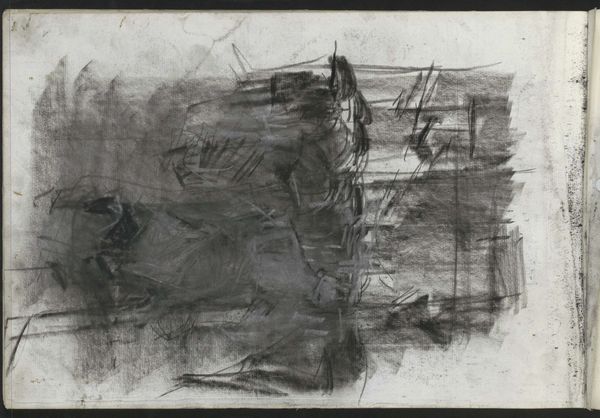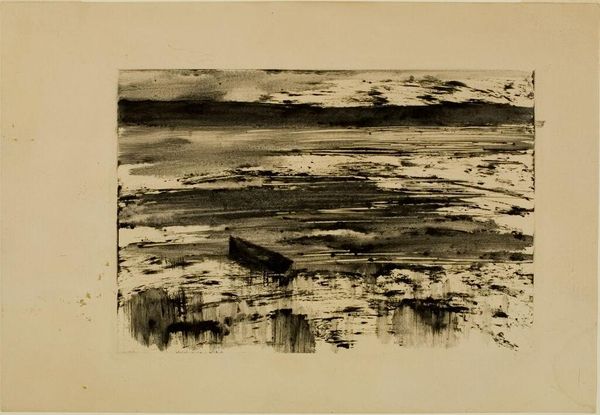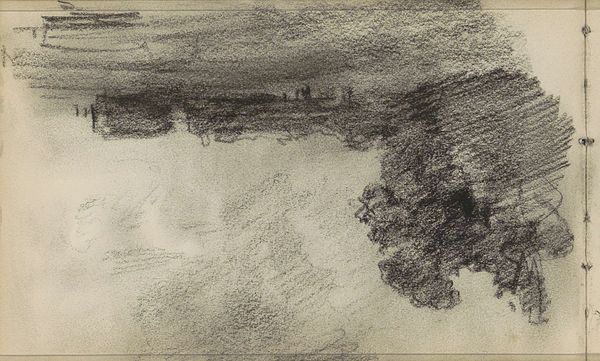
Dimensions: height 200 mm, width 260 mm
Copyright: Rijks Museum: Open Domain
Curator: Before us is Willem Witsen’s "Twee schuiten," an etching created around 1910 or 1911. The Rijksmuseum is fortunate to hold this print within its collection. Editor: It strikes me as melancholic, a landscape suspended between visibility and obscurity. The contrast is intense; light and shadow play across the surface. What do you see, formally speaking? Curator: The composition is quite interesting. Witsen employs a stark contrast between the foreground and background, using areas of almost pure white to define the space, balanced with very dark and heavily worked blacks that describe architectural forms, giving an immediate sense of depth and atmospheric perspective. It is this use of extreme value contrasts that provide structure to the etching and create visual drama. Editor: The extreme tonal range you mentioned seems representative of social divisions during this era, reflecting how urban expansion both illuminated and obscured certain experiences, literally and figuratively overshadowing others. Consider who was represented in the artistic canons of the time, versus who was erased. Does that monochrome contribute to the exclusion or the focus? Curator: An interesting observation! One could also simply admire his masterful deployment of the etching medium to its fullest potential, in pure terms of tonal expression. There is an undeniable appeal in its dramatic chiaroscuro and nuanced variations in light, showcasing considerable skill. Witsen seemed less concerned with social commentary than with capturing the intrinsic qualities of this environment in visual language. Editor: Perhaps, but I argue it's also about whose stories get told and how. Even landscapes can inadvertently uphold or subvert dominant cultural narratives. Monochrome's absence of colour forces us to interpret meaning based solely on what is included and excluded within that stark contrast. What meanings do you discern from the title including specific plural number? Curator: It prompts thoughts about transience—of light, weather, the impermanence inherent in cityscape captured this way. But also of his exceptional control of a very difficult print medium. Editor: Very well. I suppose it’s in this balance of artistic expression and socioeconomic implications that the image becomes so powerful. Curator: Indeed. It provides ample space for continued contemplation.
Comments
No comments
Be the first to comment and join the conversation on the ultimate creative platform.
